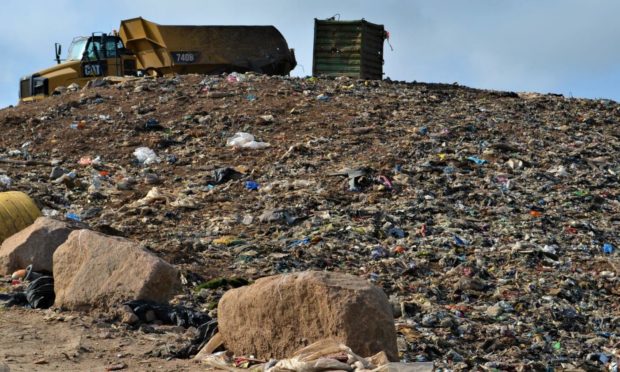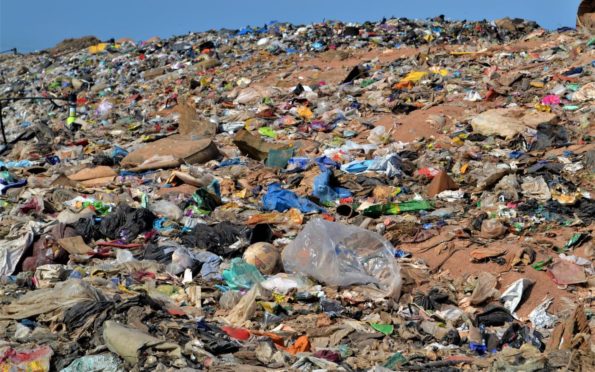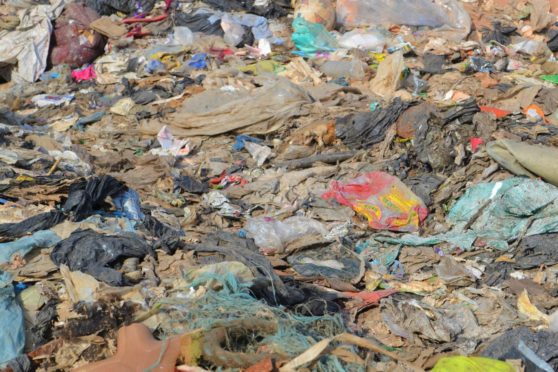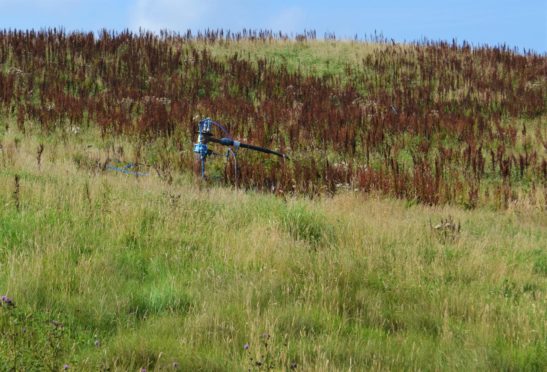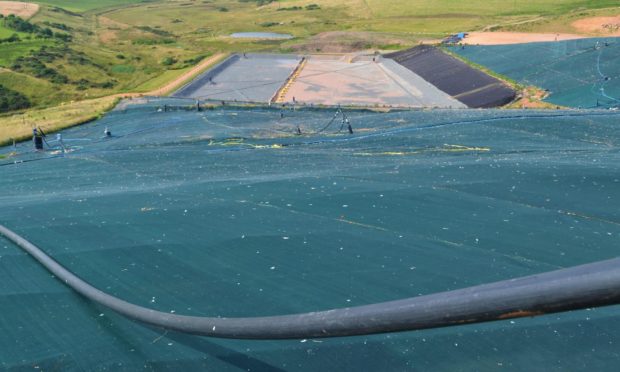After my tour around the ultra-efficient new recycling centre in Aberdeen, in partnership with various councils and recycling and waste management company SUEZ, I was taken to a local landfill site at Stoneyhill, near Peterhead. Present were Colin Forshaw and Carolyn Fitzgerald, from SUEZ, and Ros Baxter, from Aberdeenshire Council. Our guide was site manager Jim Layfield.
Because I’ve seen up close the monumental open landfill site in the Gaza Strip where zero recycling takes place, Stoneyhill is thankfully not in the same league. Gaza it may not be, that said, it’s still not pretty.
As Jim admitted to me: “Landfill is a dirty word. Yet until people finally accept that they have to recycle, this really is the only other option.”
Different councils, as explained last week, have different rules. If you live in Aberdeenshire, your rubbish, if you don’t recycle, ends up at Stoneyhill landfill site.
Just think for a moment how much we have evolved as a species. We discovered fire, the combustion engine, worked out how to do quadruple heart bypasses, perform lifesaving cancer operations, discovered antibiotics, invented the internet, put a man on the moon and split the atom. Yet we still throw much of our rubbish into a giant hole in the ground, just like they did in the stone ages.
We should not be doing this. Surely to goodness we can work out how not to bury our thrown-away trash in our beautiful environment? But of course, we’ve already worked it out, it’s called recycling.
We need to wake up and finally take recycling seriously before it’s too late.
As I walked the site, it was depressing to learn what ends up here. In fact, I saw it all around me. Clothing, newspapers, children’s toys, nappies, tons of plastic and food. All needlessly put in the wrong bin.
Infuriatingly, 21% of the rubbish that lay all around me was food, which each household could so easily have put in their food bin. Staggeringly, over 60% of what households put in black bins, which is then dumped here, is totally recyclable. A shameful and shocking statistic.
I could sense the frustration of the people around me.
As mentioned last week, and the number-one message all involved want me to push is: “Please help convince people to put things in the right bin and recycle as much as possible.”
Hundreds of tonnes arrive here six days each week all year round. And it costs increasing amounts of money due to the landfill tax. In Aberdeenshire, in the first six months of 2017, 40,096 tonnes went to landfill at a cost of almost £5 million pounds. This is money that could otherwise be spent on education and health care.
Jim, who has been in the business for many years, says it is tightly regulated. It was explained to me that the entire site is monitored for gas leaks 24/7. Interesting to note that the gas which is a by-product of the underground waste is collected on site, then sold on to heat homes. At least something good, albeit small, is coming out of here.
Due to the tight regulations: “There is no danger to public health here,” I was told.
I asked if they have a problem with rats. Surprisingly, I was told no, Jim had only seen one rat in all his years here. Probably because the thousands of gulls flying around and scavenging scare them off.
I walked up a hill and stopped. But it was a fake hill if you like, for deep underneath me, it was crammed full of thousands of tonnes of rubbish. I looked down at the ground I was standing on, a mix of freshly grown grass and lots of clover.
“How close to where I’m standing is there rubbish under my feet?”
“About a metre,” I was told.
I tried to picture it; a metre under my feet, years, decades in fact, of rubbish, much of it, probably the vast majority of it which could and should have been reused and recycled. And it will remain there, near indefinitely.
I shook my head in disgust.
While landfill is a dirty word, I certainly have no complaints about SUEZ, nor the various councils. The bottom line is this – there would be no need for this, or any landfill, if we all worked together.
A good start, of course, would be manufactures not using so much single-use plastic. But ultimately, it’s us, the end user. It’s not rocket science; we must reuse and recycle.
Sorry, that’s not correct, we are not the end user of products. If we don’t recycle…Mother Nature is the end user.
We humans really are such a destructive and wasteful species. Just contemplate the following.
Oil is first extracted from the seabed – not good for our planet – then it’s made into, say, a plastic bottle. A human buys it, drinks it, then throws it away literally minutes later. That bottle often ends up in landfill and stays there for hundreds of years. It’s madness. It’s simply not sustainable in any way.
I’m sure there will always people who just don’t care. But for the vast majority, I think they do care, it just seems that they don’t think about it. For such people, I would say the following.
“How do you feel about your plastic water bottle, or shower gel bottle, or goodness knows what else, which you could have easily recycled but didn’t, ending up buried with thousands of tonnes of other junk under our beautiful countryside? And that very same bottle that you didn’t recycle will be there long after you’ve died. Sure, it will break down eventually, but it will take hundreds if not thousands of years for it all to happen. And all for a bottle of water that you drank in a minute or so then tossed away.”
Madness.
In countries such as Russia, recycling is virtually impossible, for the system, the state, doesn’t care. But here in the UK, it’s actually made as easy for us as is possible. Bins outside our very own front doors. We even have mixed recycling, ie paper, plastic, tin cans, etc, all in one bin. It’s so easy, but many, it seems, are simply blind to their rubbish and what happens to it.
Yes, we must put maximum pressure on supermarkets to slash the ridiculous amount of single-use plastic they use, but the most important people in the equation are us.
The best gift we can leave Mother Nature after we die is LNT: leave no trace.
In the third decade of the 21st Century, we should not, when it comes to rubbish, be behaving like we did in the stone age.
Please reuse, then recycle. If you don’t, it ends up here. Take another hard look at my photos.
It ends up here.
Forever.
Is that really what we want to “leave behind”?
What a legacy…
PS – I wish to thank all those involved who made my two tours happen. To various individuals from our councils to members of SUEZ. I hope I have helped in some way to get your message across.
